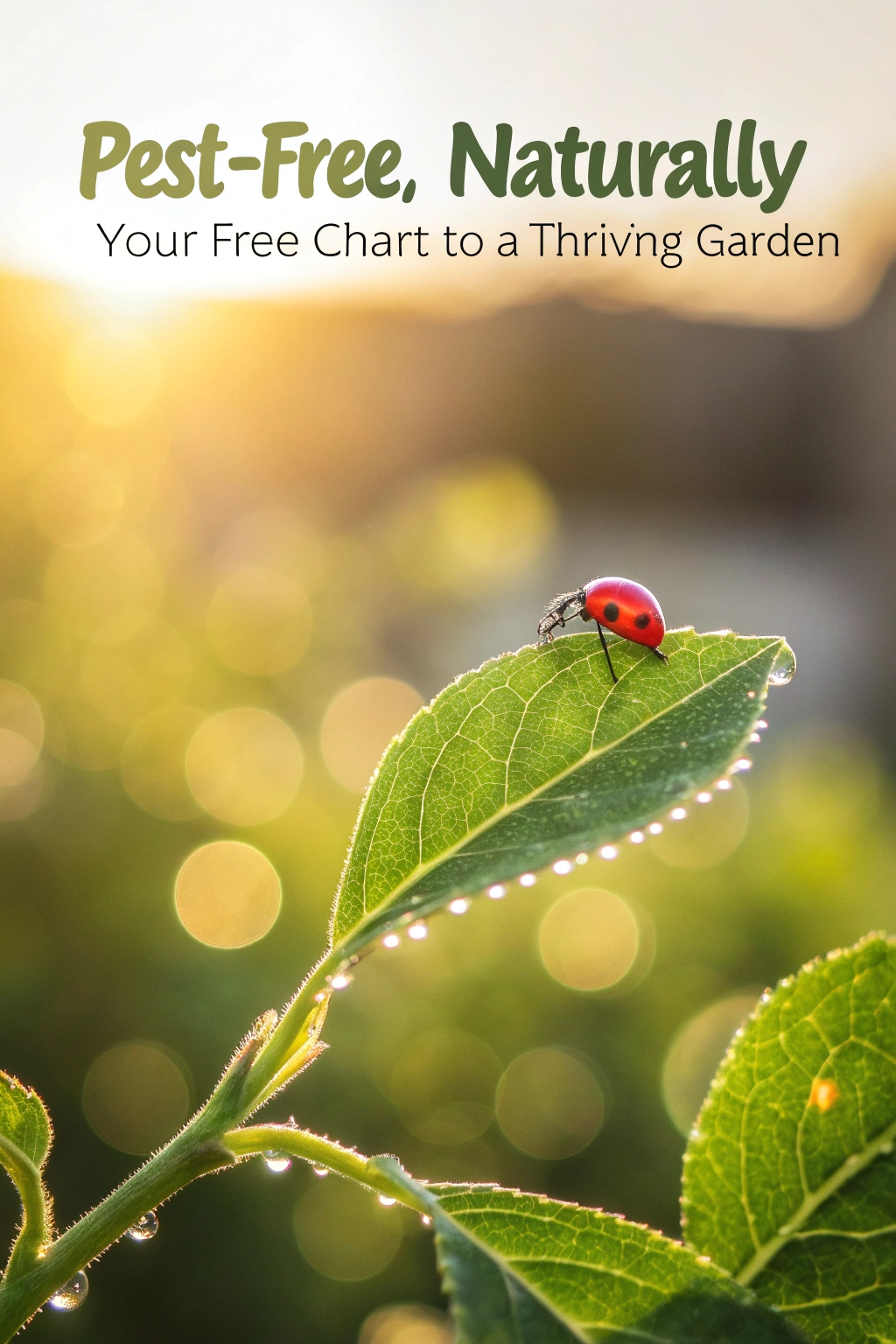Start your vegetable garden with simple steps. Pick a sunny spot and check your soil. Add dirt or compost if needed.
Choose easy plants like tomatoes or carrots. Plan where to plant each type. Water and care for your plants every day.
Grow veggies that fit your space. Use rows or containers for small areas.
Watch for bugs and weeds. Learn from mistakes to get better. Every garden grows stronger with practice. Make planting fun for your family.
Choose the Right Location
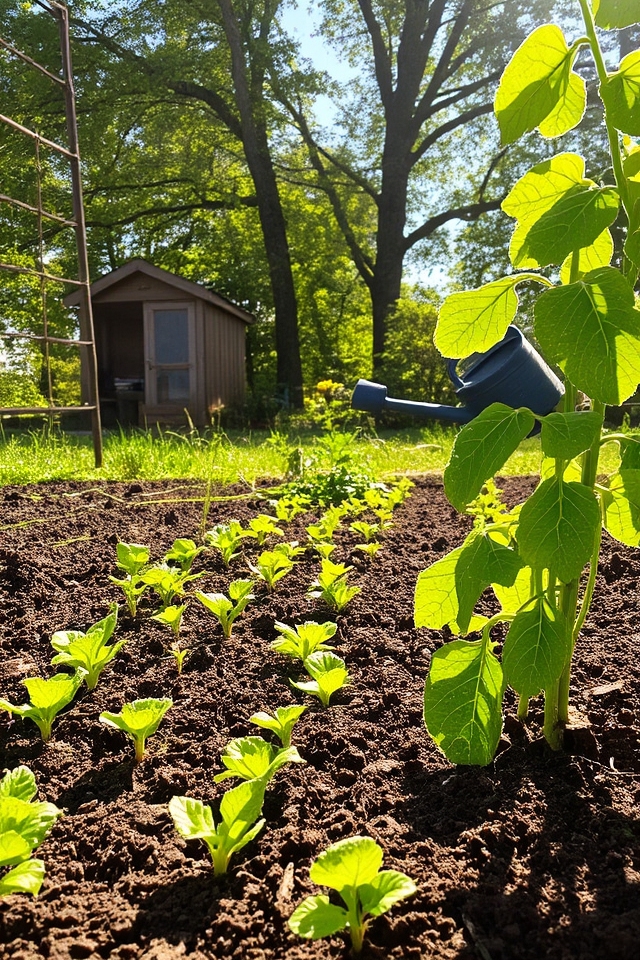
Choosing the right location for your vegetable garden is essential for success. Look for an area that receives at least 6-8 hours of direct sunlight each day, as most vegetables thrive in bright conditions. Make certain the spot has good drainage to prevent waterlogging, and consider proximity to a water source for easy irrigation. Additionally, select a location that’s shielded from strong winds, which can damage tender plants and reduce their growth potential.
Test Your Soil
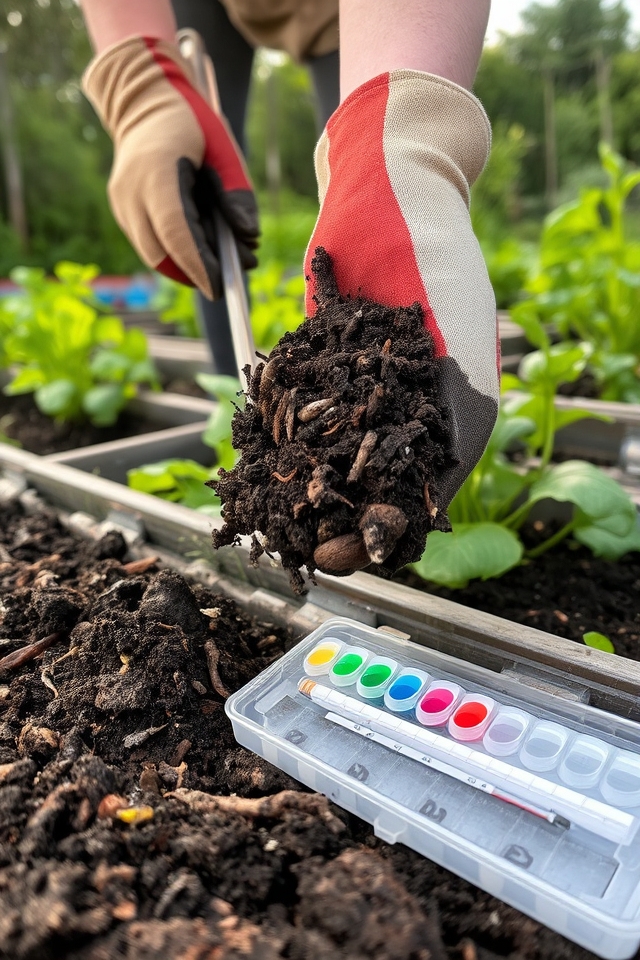
Testing your soil is an essential step for a successful vegetable garden. It helps determine pH levels, nutrient content, and soil texture, enabling you to understand what amendments are needed for peak plant growth. Kits for testing are widely available at garden centers or online. Regular testing can guarantee that your soil remains healthy and suitable for your vegetables, ultimately leading to a bountiful harvest. Aim to test your soil every few years for the best results.
Improve Soil Quality
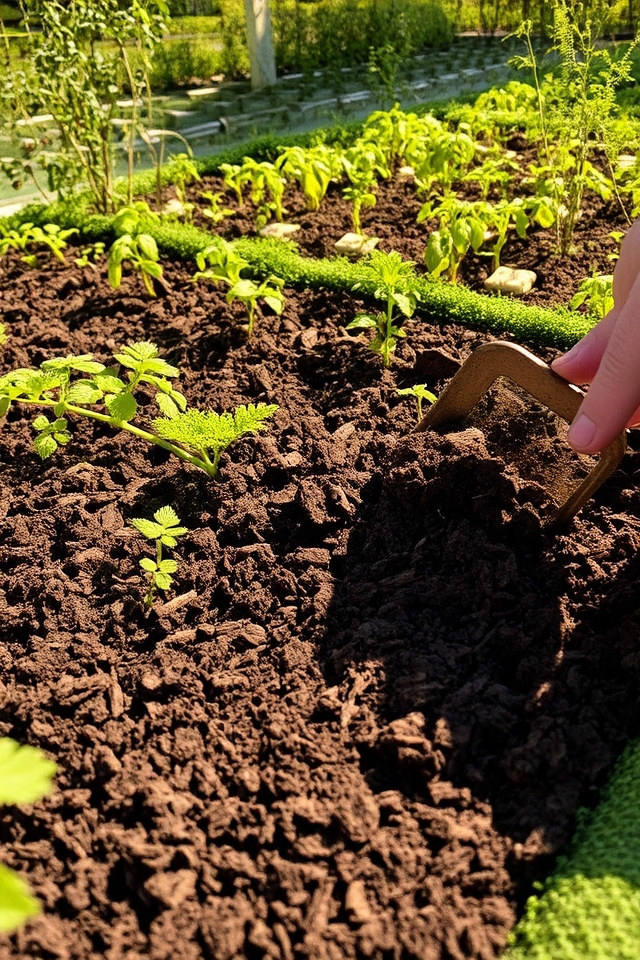
Improving soil quality is essential for a thriving vegetable garden. Start by testing your soil pH to determine its acidity or alkalinity. Incorporate organic matter such as compost, well-rotted manure, or leaf mold to enhance nutrient content and improve soil structure. Mulching can also help retain moisture and suppress weeds. Additionally, rotate your crops annually to prevent nutrient depletion and reduce pest build-up, promoting a healthier growing environment for your vegetables.
Select the Best Vegetables
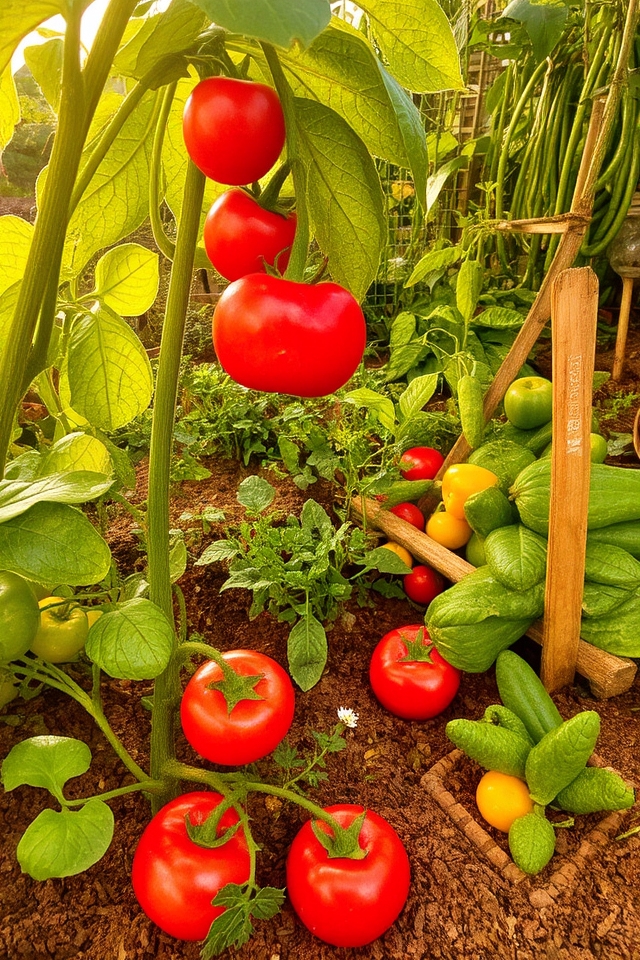
When selecting the best vegetables for your home garden, consider your climate, soil type, and available space. Opt for varieties that thrive in your region, and think about your family’s preferences to maximize enjoyment. Start with easy-to-grow vegetables like tomatoes, cucumbers, and peppers for beginners. It’s also beneficial to plant a mix of fast-growing and longer-maturing crops to guarantee a continual harvest throughout the growing season. Don’t forget to check for companion planting options to boost growth and deter pests!
Plan Your Garden Layout
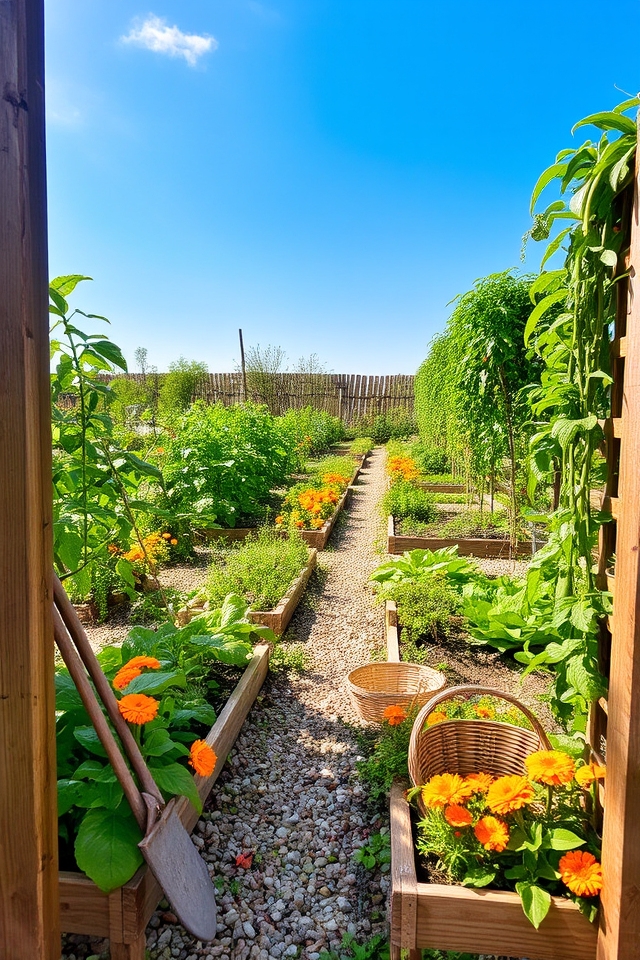
Planning your garden layout is essential for maximizing space and ensuring healthy plant growth. Start by evaluating your available area, considering sunlight exposure, soil quality, and drainage. Sketch a rough layout, placing taller plants like tomatoes on the north side to prevent shading shorter plants. Incorporate companion planting to enhance growth and deter pests. Additionally, leave pathways for easy access to harvest and maintain your garden, ensuring a productive and enjoyable gardening experience.
Start With Seeds or Seedlings
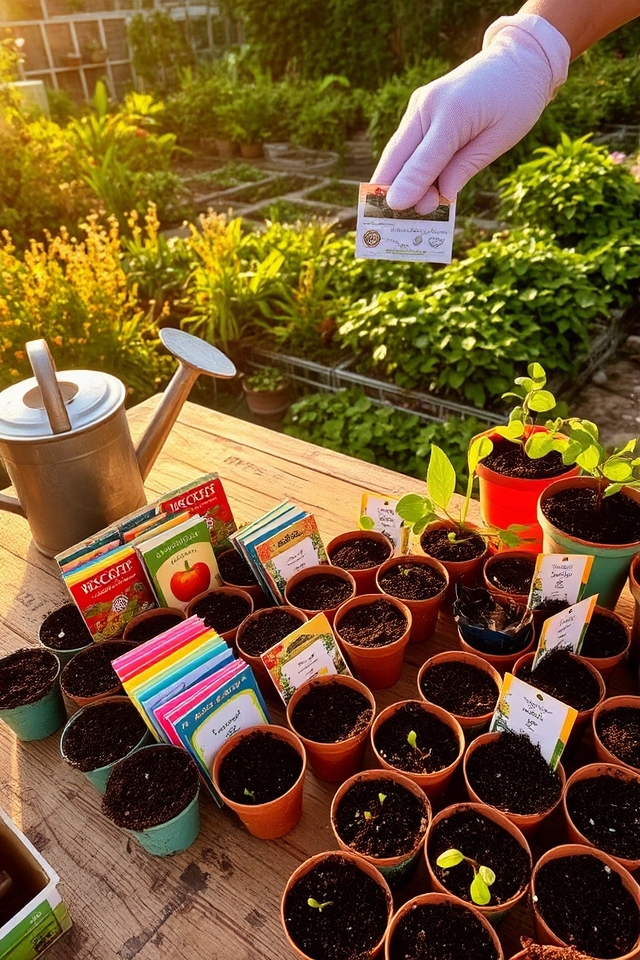
When starting your home vegetable garden, deciding between seeds or seedlings is essential. Seeds offer a wider variety of choices and are generally more cost-effective, allowing for a personalized garden experience. However, seedlings provide a head start, as they are already germinated and can establish themselves quicker. Consider your gardening timeline, space, and personal preferences—if you have more time and patience, seeds can be rewarding; if you’re keen for results, seedlings might be the way to go.
Understand Plant Spacing
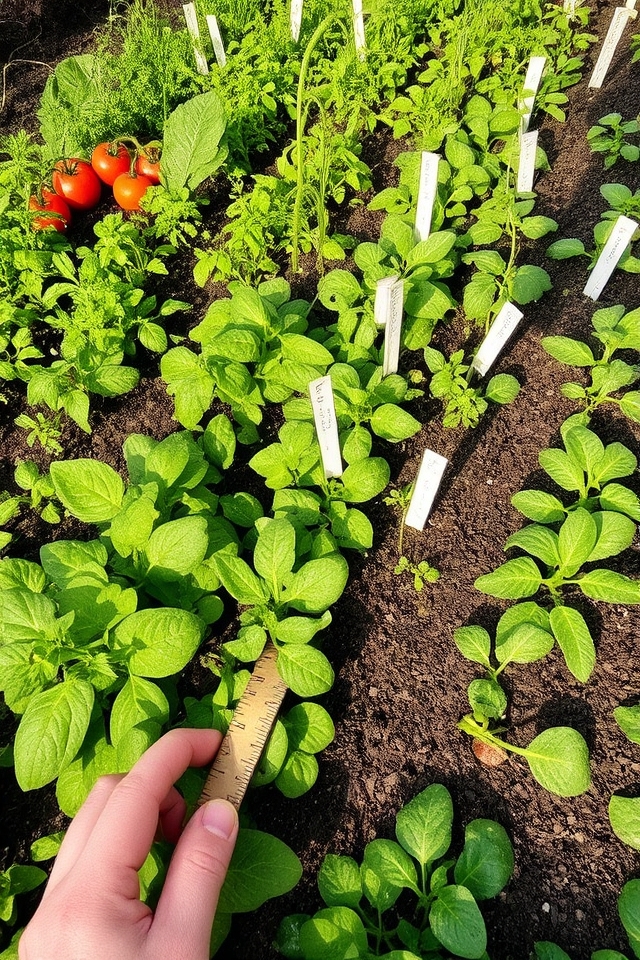
Understanding plant spacing is essential for a successful home vegetable garden. Each type of vegetable has its unique spacing requirements, which help guarantee proper air circulation, sunlight exposure, and nutrient access. Crowding plants can lead to competition for resources, resulting in stunted growth and increased vulnerability to pests and diseases. Refer to seed packets or gardening guides for specific spacing recommendations to optimize your garden’s yield and overall health.
Implement Crop Rotation
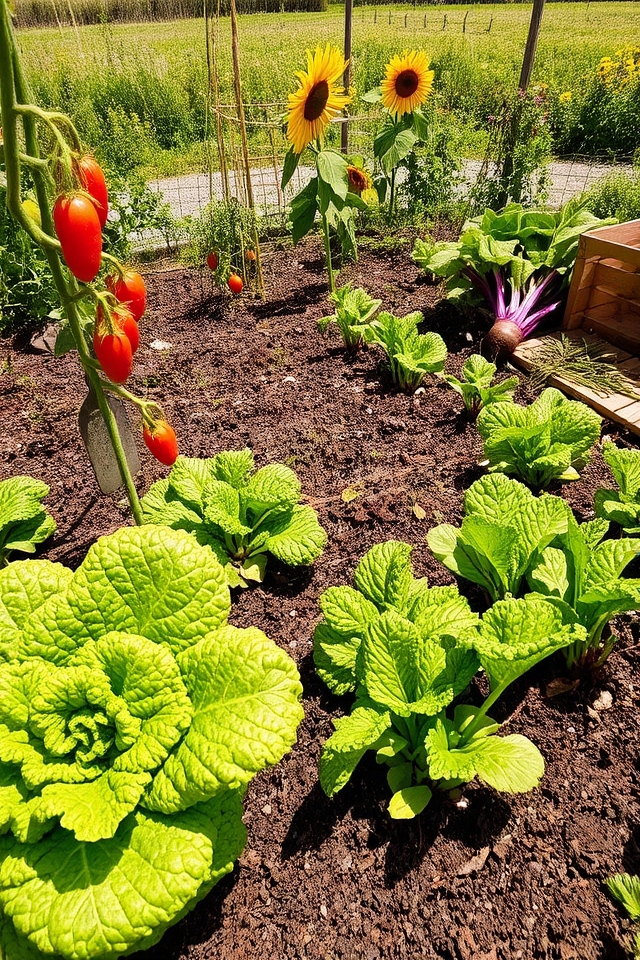
Implementing crop rotation in your vegetable garden is essential for maintaining soil health and maximizing yields. By alternating the types of crops grown in a particular area each season, you can reduce the build-up of pests and diseases that thrive on specific plants. Additionally, different crops have varying nutrient requirements, so rotating them helps in balancing soil fertility. This practice not only promotes biodiversity but also enhances the resilience of your garden ecosystem.
Water Wisely
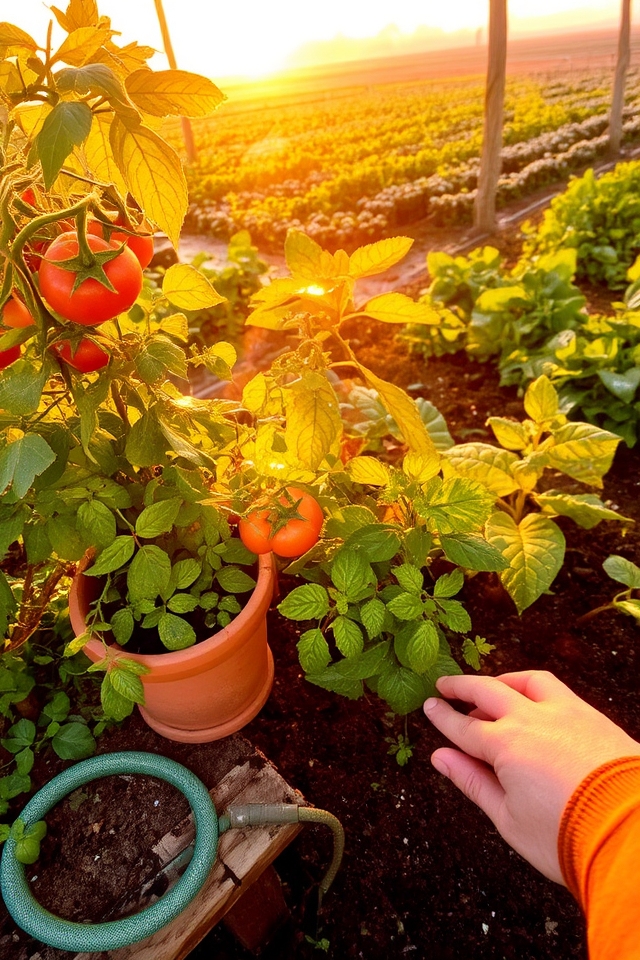
Watering wisely is essential for a successful vegetable garden. Aim to water deeply and less frequently to encourage strong root growth. Early morning is the best time to water, as it reduces evaporation and fungal diseases. Use soaker hoses or drip irrigation to deliver moisture directly to the soil, minimizing waste. Monitor soil moisture by feeling it; it should be damp but not soggy. Adjust your watering routine based on rainfall and plant needs to promote healthy growth.
Mulch for Moisture Retention
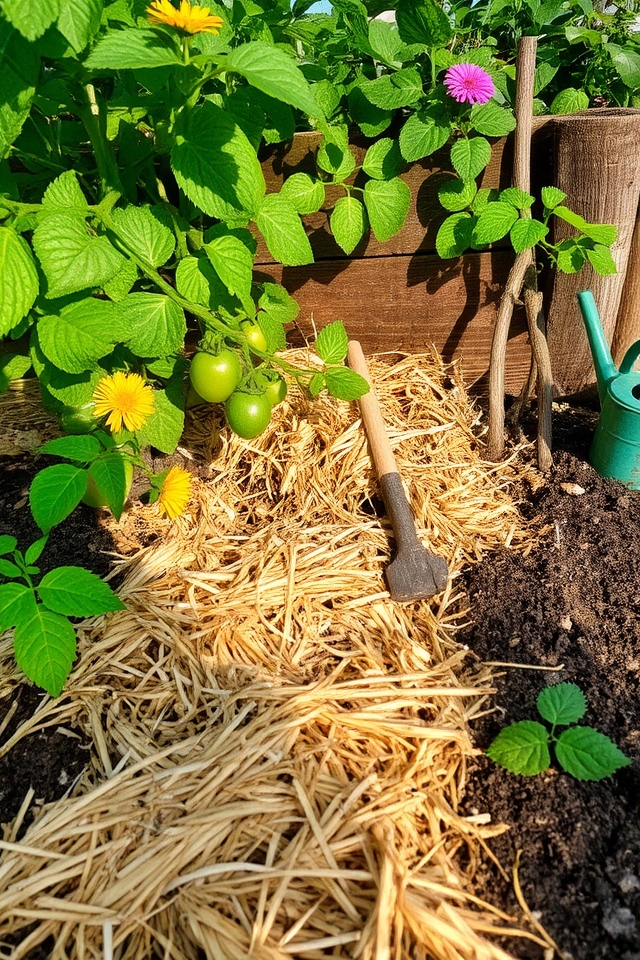
Mulch is an essential element for optimizing moisture retention in your vegetable garden. By applying a layer of organic materials, such as straw, wood chips, or grass clippings, you can reduce evaporation from the soil, keeping it consistently moist for longer periods. This helps prevent the roots of your plants from drying out, promotes healthier growth, and minimizes the need for frequent watering. Additionally, mulch suppresses weed growth, further enhancing your garden’s productivity.
Use Natural Pest Control

Using natural pest control in your home vegetable garden is an effective and eco-friendly way to manage unwanted insects. Beneficial insects like ladybugs and lacewings can help keep pest populations in check, while companion planting—growing certain plants together—can deter harmful insects. Additionally, homemade solutions such as neem oil or soap sprays can target pests without harming the environment. Embracing natural methods not only supports garden health but also promotes biodiversity.
Support Your Plants
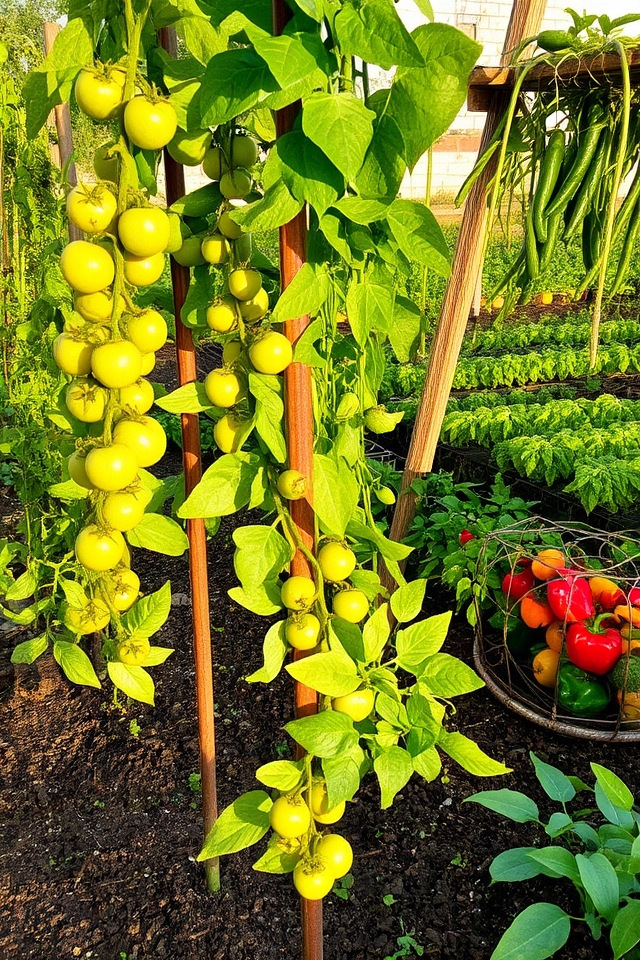
Supporting your plants is vital for a flourishing vegetable garden. Use stakes, cages, or trellises to provide structural assistance, particularly for climbing varieties like tomatoes, beans, and cucumbers. Proper support keeps plants upright, prevents damage from wind or heavy fruit, and improves air circulation. Additionally, it can enhance sunlight exposure and make harvesting easier. Regularly check your supports and adjust as your plants grow to guarantee they get the best possible aid throughout their development.
Regularly Monitor for Diseases
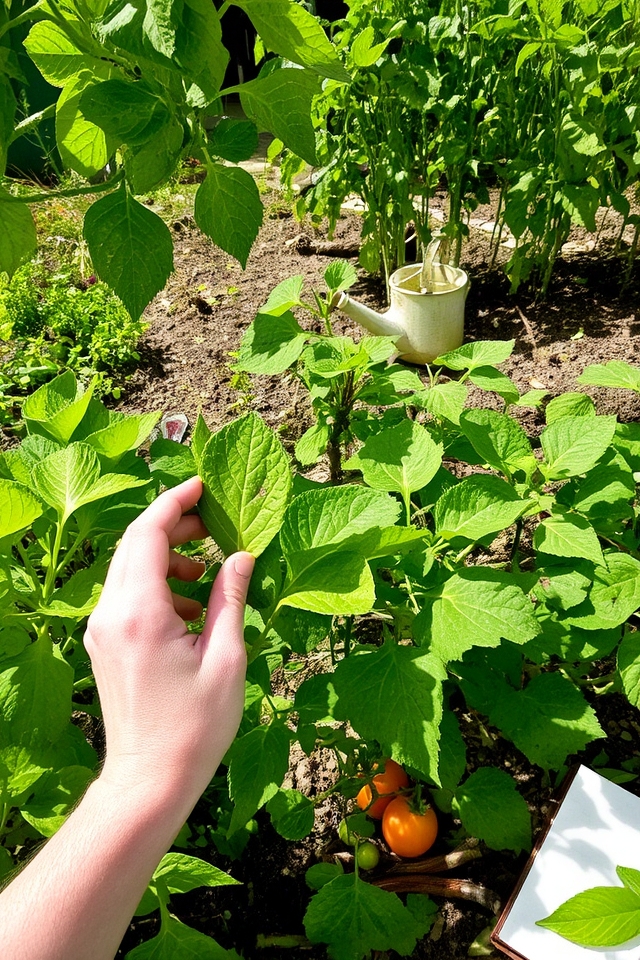
Regularly monitoring for diseases in your vegetable garden is essential for maintaining plant health and maximizing your yield. Check your plants frequently for signs of wilting, discoloration, or unusual spots on leaves. Early detection allows for prompt treatment, whether through organic methods or targeted pesticides. Keep your garden clean by removing debris and rotating crops yearly to prevent disease buildup. Staying vigilant helps guarantee a thriving vegetable garden for seasons to come.
Prune and Trim When Necessary
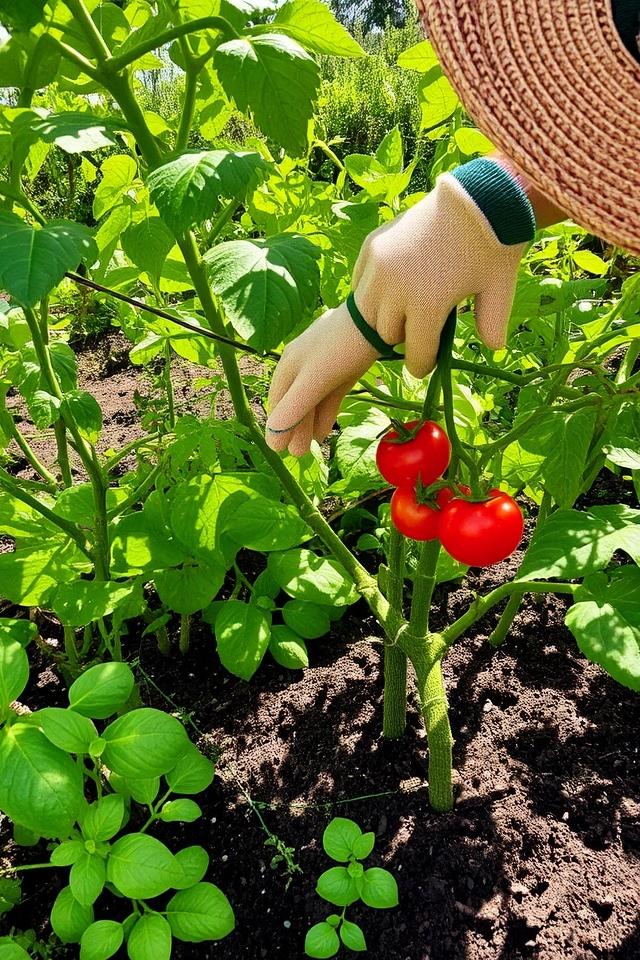
Pruning and trimming are essential practices in maintaining a healthy home vegetable garden. By regularly removing dead or overcrowded branches and leaves, you promote better air circulation and reduce the risk of diseases. Additionally, pruning encourages plants to focus their energy on producing fruit or vegetables rather than excess foliage. For best results, always use clean, sharp tools, and prune during the appropriate season to avoid stressing your plants.
Harvest at the Right Time
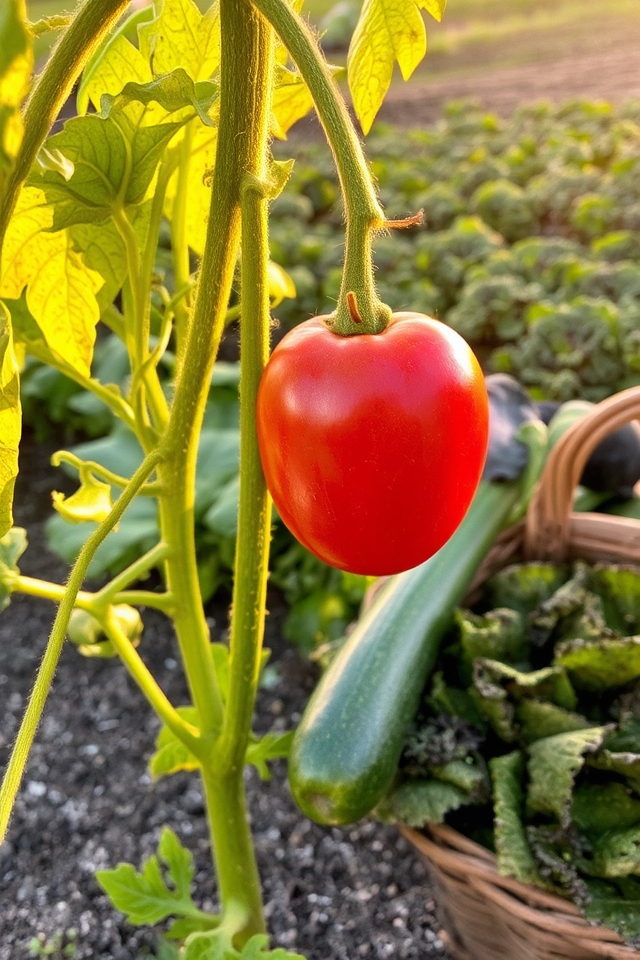
Harvesting your vegetables at the right time is essential for achieving the best flavor and texture. Each type of vegetable has specific signs indicating its peak ripeness. For instance, tomatoes should be harvested when they are fully colored and slightly soft, while zucchini should be picked when they are young and tender. Regularly check your garden, as different plants can mature at varying rates. Timely harvesting not only enhances taste but also encourages further production from your plants.
Preserve Your Bounty
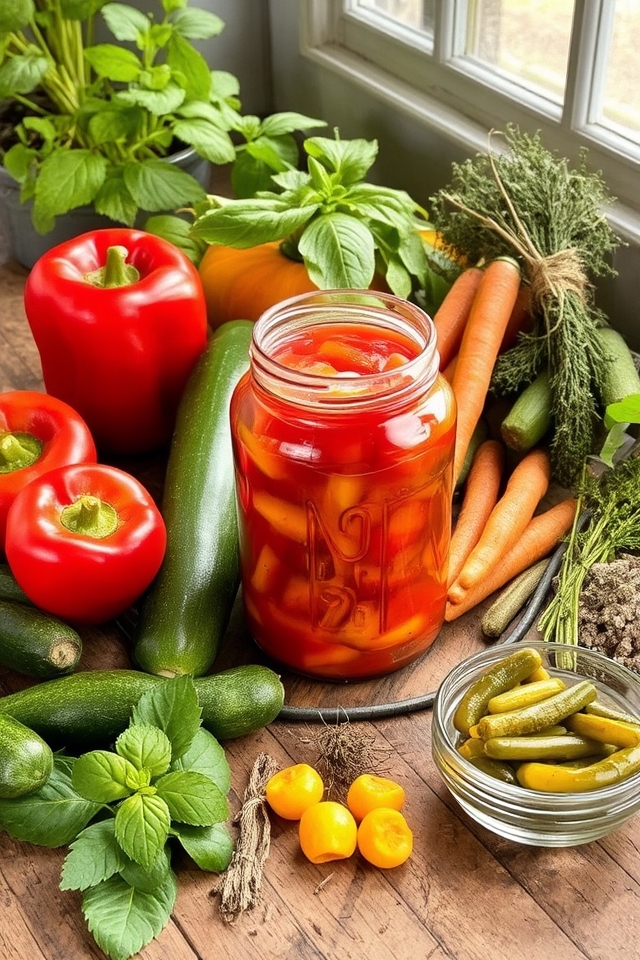
Preserving your garden’s bounty is an essential step to make the most of your hard work throughout the growing season. Techniques such as canning, freezing, drying, or pickling can help extend the life of your vegetables. To guarantee quality, harvest at peak ripeness and prepare them promptly. Proper storage conditions, like cool, dark places for canned goods or airtight containers for dried produce, will help maintain flavors and nutrients. Enjoy the fruits of your labor year-round!
Keep Learning and Experimenting
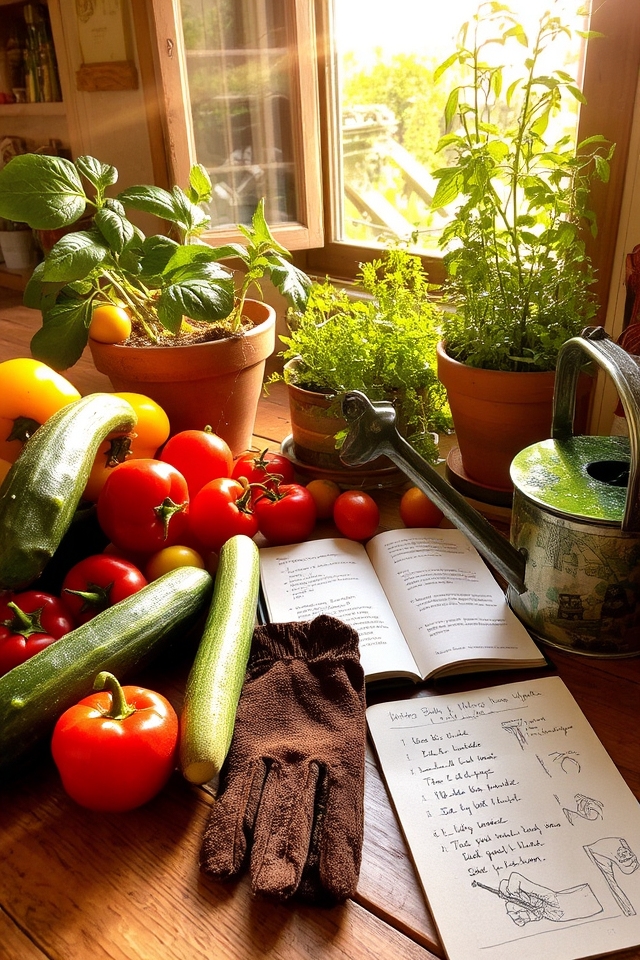
To cultivate a thriving vegetable garden, it’s crucial to embrace a mindset of continuous learning and experimentation. Every season offers new opportunities to try different plants, techniques, and growing conditions. Observe how various vegetables respond to changes in sunlight, soil, and watering. Attend workshops, read gardening books, and connect with local gardening communities to gain insights. By staying curious and open to trying new methods, you’ll enhance your gardening skills and ultimately enjoy a more fruitful harvest.
Conclusion
By following these tips, you can cultivate a thriving home vegetable garden this year. Did you know that home gardeners can grow an average of 300 pounds of fresh produce annually? That’s a substantial amount of vegetables right from your backyard! Remember to keep learning and experimenting, as gardening is a journey. Engage with fellow gardeners, share experiences, and enjoy the satisfaction of nurturing your plants while reaping the benefits of your hard work. Happy gardening!



